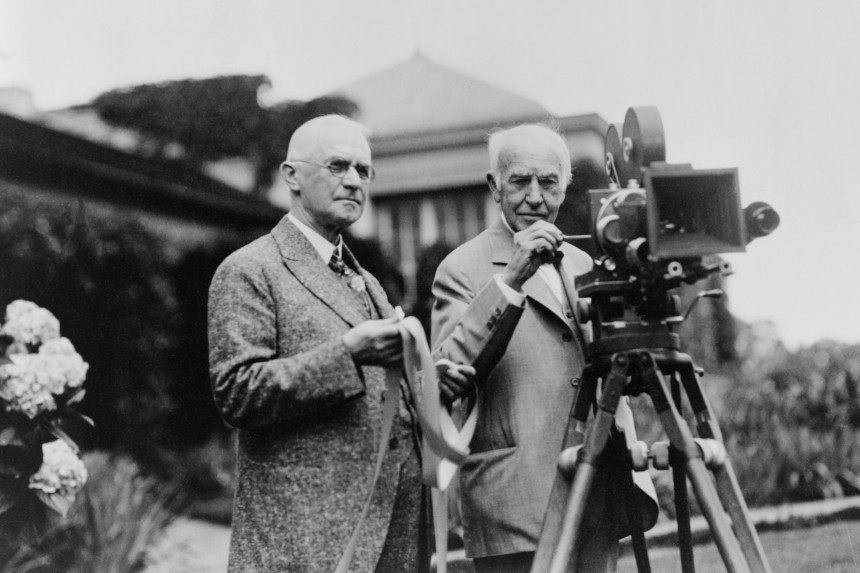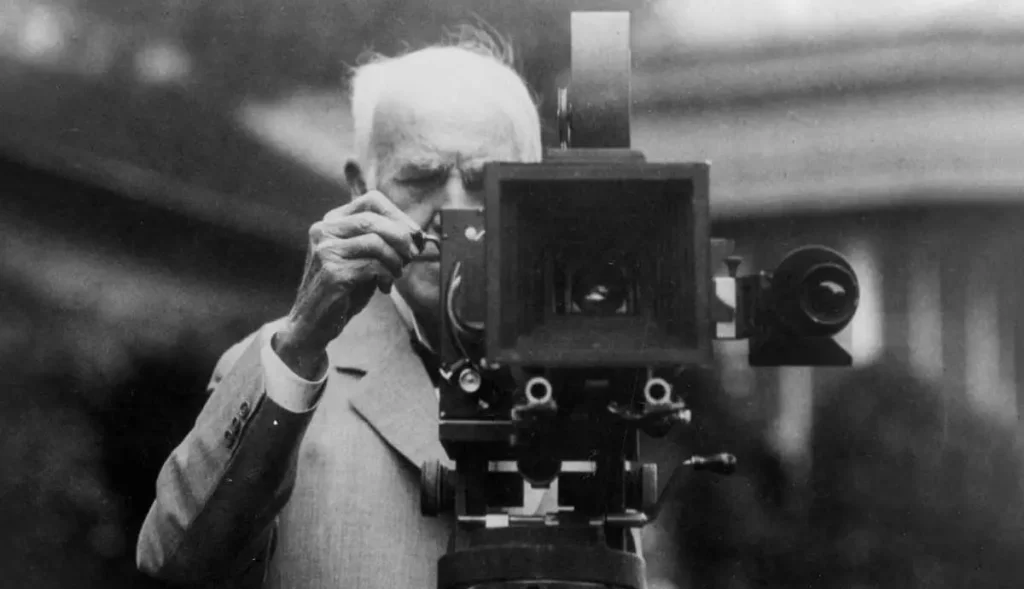We all are aware of the impact that Thomas Edison’s light bulb has had on humanity and of course invariably on visual arts and how one views art. His light bulb was the end for gaslights, whale oil lamps, and candles in homes all around the world. Edison’s version of incandescent illumination, which was patented on October 21, 1879, outperformed all other attempts, including Humphry Davy’s potent electric lamp from the 1800s. It was more reasonably priced, more durable, and more energy-efficient. Edison’s lightbulb, which was developed after more than 1,200 trials, had a ground-breaking 14.5-hour light lifespan. “My light is finally perfect,” Edison declared to a New York Times reporter.
Besides the light bulb, Thomas Edison made other notable inventions that have impacted the world of arts. We shall be delving into a few of these through the course of this article.
Thomas Edison, the Entrepreneur and Scientist
Thomas Alva Edison was born in Ohio in 1847 and raised in Port Huron, Michigan, with just a meagre education. Raised by his parents in their basement, where he was taught science by his intrepid mother, a former teacher, he fell in love with literature. He started working as a “news butcher” aboard trains at the age of twelve, and he finally printed the Grand Trunk Herald, the first newspaper ever created on a moving train. He became an itinerant telegrapher due to his interest in telegraphy, and at the age of 15, he relocated to New York to open his own workshop. At the age of 27, Edison created the quadriplex telegraph in 1874, which revolutionised the industry’s efficiency by enabling four messages to be sent concurrently without the need for extra lines. This invention signaled the start of his prolific career as an inventor and entrepreneur. Now, let us have a look at his unique inventions and how the shaped the world as well as the arts.
The Motion Picture Camera
Moving pictures is an art form that has changed how we view the world, it is now a billion dollar industry that constantly is churning out great cinema for people to consume. It is culminating various different art forms into one. But how and when is it believed to have been created? Well, according to many the motion picture camera known as the Kinetoscope and the peep-hole motion picture viewer known as the Kinetograph were both created in Edison’s laboratory. On October 6th, 1889 American inventor Thomas Alva Edison (1847- 1931) showed his first motion picture, Monkeyshines, which was produced using this vert kinetograph. William Kennedy Laurie Dickson, Edison’s assistant, completed the majority of this work starting in 1888.

In 1894, Edison initiated public film screenings in recently-opened “Kinetograph Parlors.” The advent of the kinetoscope movie projector and the kinetograph movie camera by Thomas Edison led to the emergence of silent films. Edison’s establishment of America’s inaugural movie studio, Black Maria, in West Orange, New Jersey, unexpectedly transformed the town into a hub for filmmaking. With Black Maria pioneering the production of the first silent movies, competition surged, prompting Edison’s strategic response.To maintain dominance, Edison leveraged his renowned tool: patents. He orchestrated a coalition of key patent holders in the industry, forming the Motion Picture Patents Company (MPPC), commonly referred to as the Edison Trust. In less than ten years, the motion picture business flourished, replacing the single-viewer Kinetoscopes with mass-produced motion pictures. Along with creating the equipment needed to record and project motion pictures, the Edison Manufacturing Co. (later renamed as Thomas A. Edison, Inc.) also made motion pictures that were intended for general release. Thomas Edison is regarded as the unintentional founder of Hollywood by some even!
The Edison Electric Pen, Paved way for Electric pen for Tattoo-ing
150 years ago, Thomas Edison recognised the cumbersome nature of paper documents and the need for an efficient way to duplicate them. Collaborating with Charles Batchelor, he conceived the idea of an electric pen, aiming to streamline the process of creating stencils for duplication. This device, detailed in U.S. Patent No. 180,857, utilised electricity to perforate paper, serving as a template for copying. Edison’s electric pen, resembling a dentist’s drill powered by batteries, could perforate a stencil up to 50 times per second. Paired with a flatbed press and ink roller, it formed a duplicating system capable of producing thousands of copies from a single stencil. Initially met with commercial promise, Edison’s electric pen saw widespread distribution, but its success fell short of expectations. Despite efforts to market it for various uses, including invoices, contracts, and sheet music, its popularity dwindled. While production numbers vary, estimates suggest around 10,000 pens were manufactured. Despite this, the electric pen fared better than some of Edison’s other ventures, such as a short-lived talking doll.However, the pen never took as an invention, but it paved way for a new entrepreneurial venture. The ink pens that carved the body, the tattoo pens.

New York City-based tattoo artist Samuel F. O’Reilly was granted U.S. Patent No. 464,801 for his electric tattoo machine on December 8, 1891. O’Reilly’s invention had an ink reservoir, a tubular handle, and five needles, and it was modeled after Thomas Edison’s electric pen. In addition to giving tattoo artists more speed and accuracy, this equipment lessened, albeit not completely eliminated, the pain that comes with getting inked. O’Reilly said trying both Edison’s electric pen and Bonwill’s dental plugger in an 1898 interview with the New York Sun, but he didn’t think they were strong enough to pierce the skin. O’Reilly improved the idea after it was first rejected by the patent office for being too similar to earlier inventions like August Carey’s autographic pen and William Henry Abbott’s sewing machine.Eventually, he received the patent for the pen.
Thomas Edison’s inventiveness transformed several artistic mediums with his ground-breaking discoveries. His invention of the motion picture camera revolutionised the film industry, radically changing the way narratives are told and conveyed and influencing how audiences view movies. His invention of the electric pen also paved the way for technological developments in tattooing, demonstrating his significant influence on a variety of artistic fields, including body art and the silver screen.
Feature image courtesy: The Collector
References:
1. https://www.nationalgeographic.com/history/article/thomas-edison-light-bulb-history
3. https://www.apollo-magazine.com/4-things-to-see-history-of-light/
4.https://spectrum.ieee.org/getting-inked-up-thank-thomas-edison
5.https://www.saturdayeveningpost.com/2021/03/thomas-edison-the-unintentional-founder-of-hollywood/






